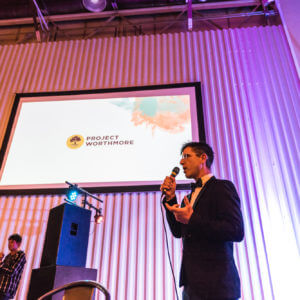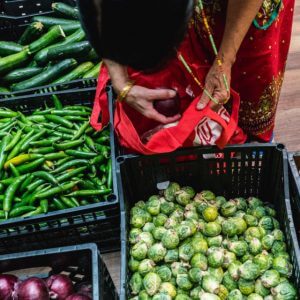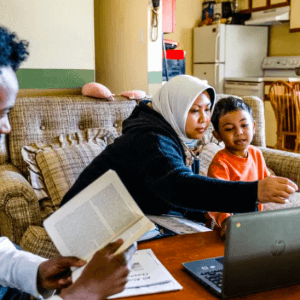I met Eh Kaw a few months ago when she first came to the PWM office with a friend. She brought several paintings to show me, as she had heard we were having an art show. I was blown away at her level of technical skills, especially for her young age (20) and for only having painted for 3 years. I offered her a space to paint at the Mango House because she had mentioned that her tiny shared bedroom at home was not working out and she had no place for an easel. The following week she showed up with a load of supplies and worked on a new painting for almost 8 straight hours!
She told me how she first discovered her love of drawing at the age of 5, with her fingers in the sand, then using charred ends of burnt wood.
One day I drove with Eh Kaw to see her college art exhibit. She led me down a long hallway, to aroom with black walls, where a variety of landscapes, flowers and people came to life. Pencil and pastel drawings, acrylic paintings, some collages. Her “very first oil painting” – as she pointed it out to me – looked more like a late Georgia O’Keefe masterpiece than the child-like rendition one might expect from a first attempt.

As we made our way around the room, Eh Kaw seemed very eager to tell me the stories behind each piece. Then we came to a graphite drawing, made up of 3 vignettes. It was not particularly eye catching from afar, but as I moved closer, I was intrigued with the visual story that began to unfold in its lines. Eh Kaw elaborated that the first vignette was of Burma – distant mountains, lush fields, and younger versions of herself at the foot of the image. She told me how she first discovered her love of drawing at the age of 5, with her fingers in the sand, then using charred ends of burnt wood. The scene was of innocence and discovery, enclosed in a bamboo border. The second image, she explained, takes place after her family moved to a refugee camp in Thailand. Its border was of barbed wire. Here, she later confessed, she was rarely allowed to go outside except to tend to her chores feeding the farm animals. In school here, she described making drawings in textbooks with actual pencils. The scene is still very open and lush, but hints at something darker, less certain. A young girl cowers shyly on the edge. The third scene takes place in Colorado. At first glance, the mood appears solemn with a girl’s face peering out from behind a darkened window at her lifeless concrete surroundings. But hope encircles the image with playful swirls. Another girl is standing tall and confident on the outside of a bricked-in border, on equal terms with a larger than life paintbrush at her side.

It says to me, after all these transitions, she has found her joy again. That wonder and sense of discovery she had as a child in Burma has returned, the majesty and familiarity of the distant mountains still within her range of sight. I connected very deeply to Eh Kaw’s story in this piece, as it reflects a common theme for the kinds of circumstances we all face.
[spacer size=”mini”]
As an artist I know of the difficulties in expressing oneself clearly to others in a way that doesn’t leave you too vulnerable or misunderstood. Trying to adapt to new environments and learning to fit in, without loosing your own identity is also something most of us can relate to. But Eh Kaw’s visual language is one that is easily understood. Her story, a shining example of hope for people of every past.
By Carmen Melton, Board Member & Artist
Meet Eh Kaw and see her work at Our Neighbors, Ourselves April 11, 6pm.
Read about Eh Kaw’s journey from Burma to America: How Art Is Her Refuge


